Bài giảng Xử lý tín hiệu số - Chương 2: Quantization - Hà Hoàng Kha
Quantization process –Example
In a digital audio application, the signal is sampled at a rate of 44
KHz and each sample quantized using an A/D converter having a
full-scale range of 10 volts. Determine the number of bits B if the
rms quantinzation error mush be kept below 50 microvolts. Then,
determine the actual rms error and the bit rate in bits per second
D/A Converters-Example
A 4-bit D/A converter has a full-scale R=10 volts. Find the quantized
analog values for th f ll e following cases ?
a) Natural binary with the input bits b=[1001] ?
b) Offset binary with the input bits b=[1011] ?
c) Two’s complement binary wi h h i th the input bi b [1101] ? ts b=[1101
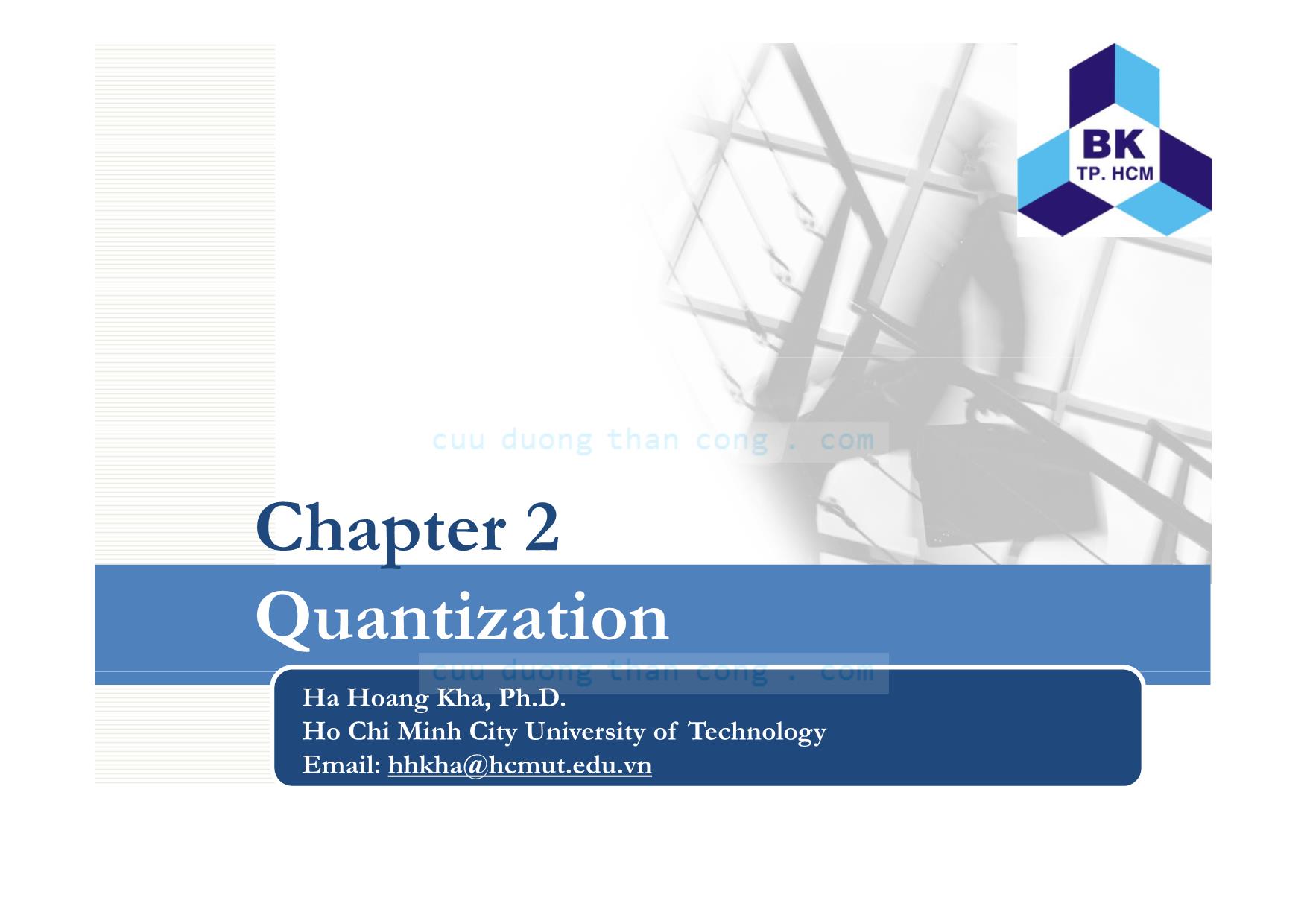
Trang 1
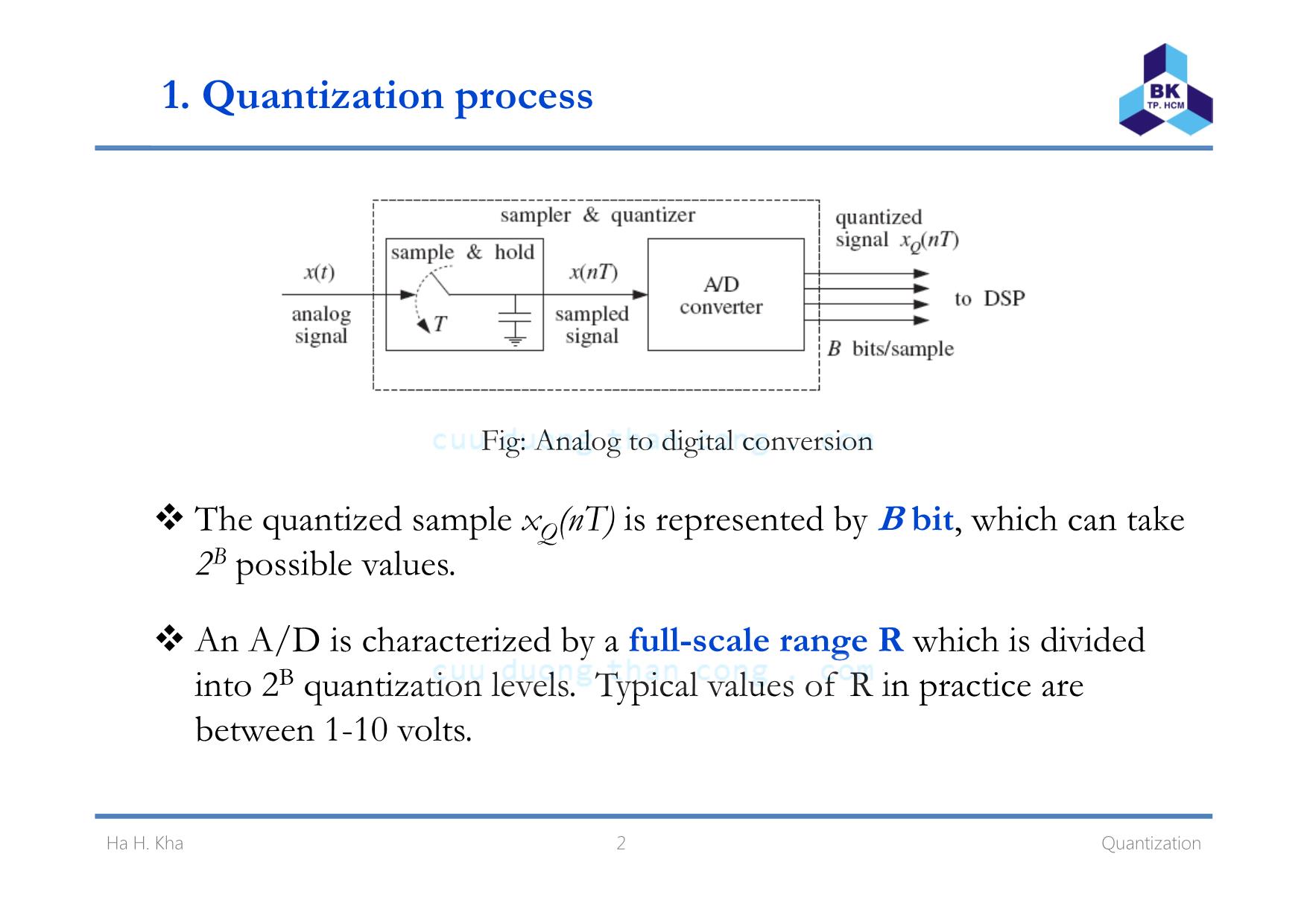
Trang 2
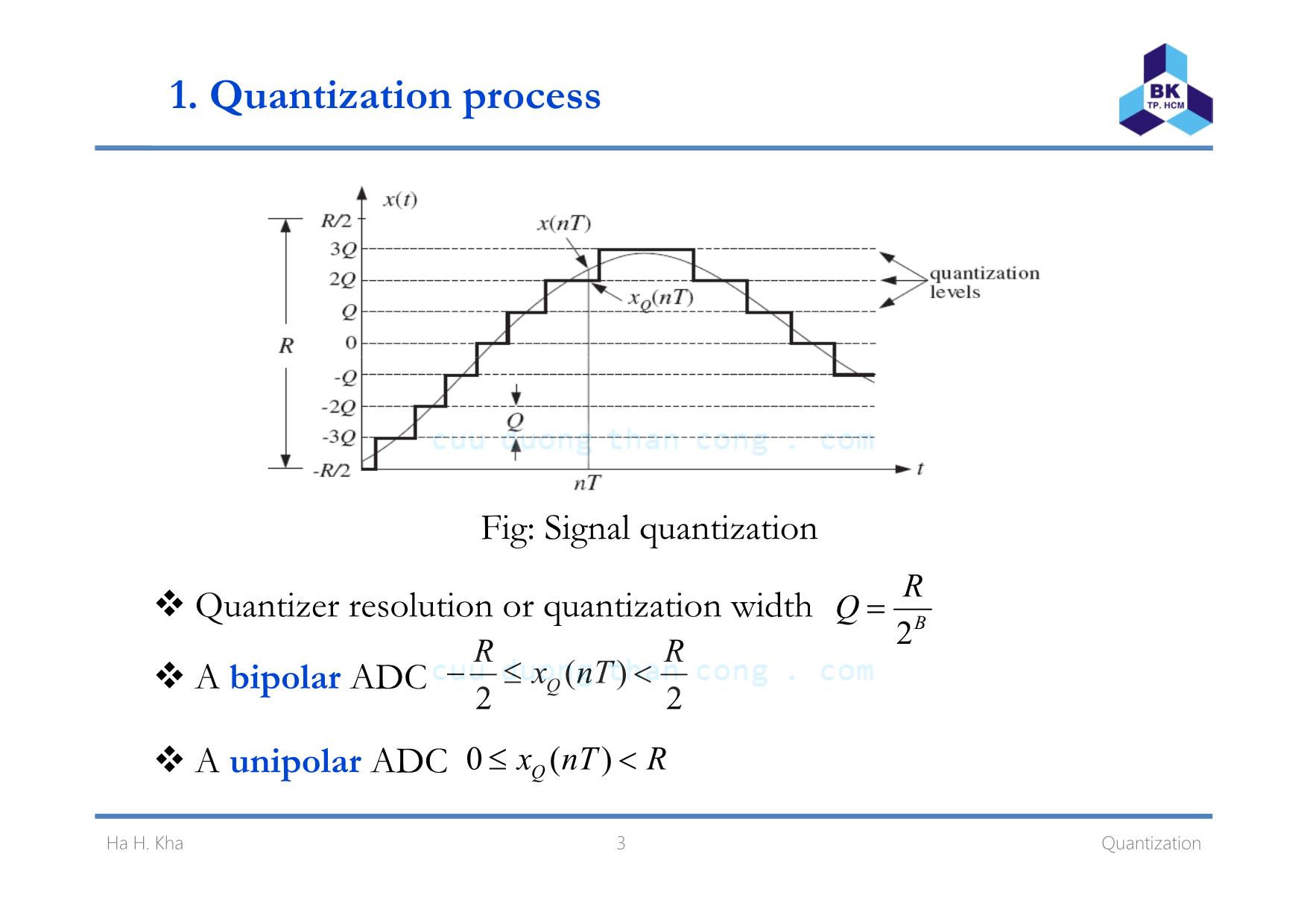
Trang 3

Trang 4
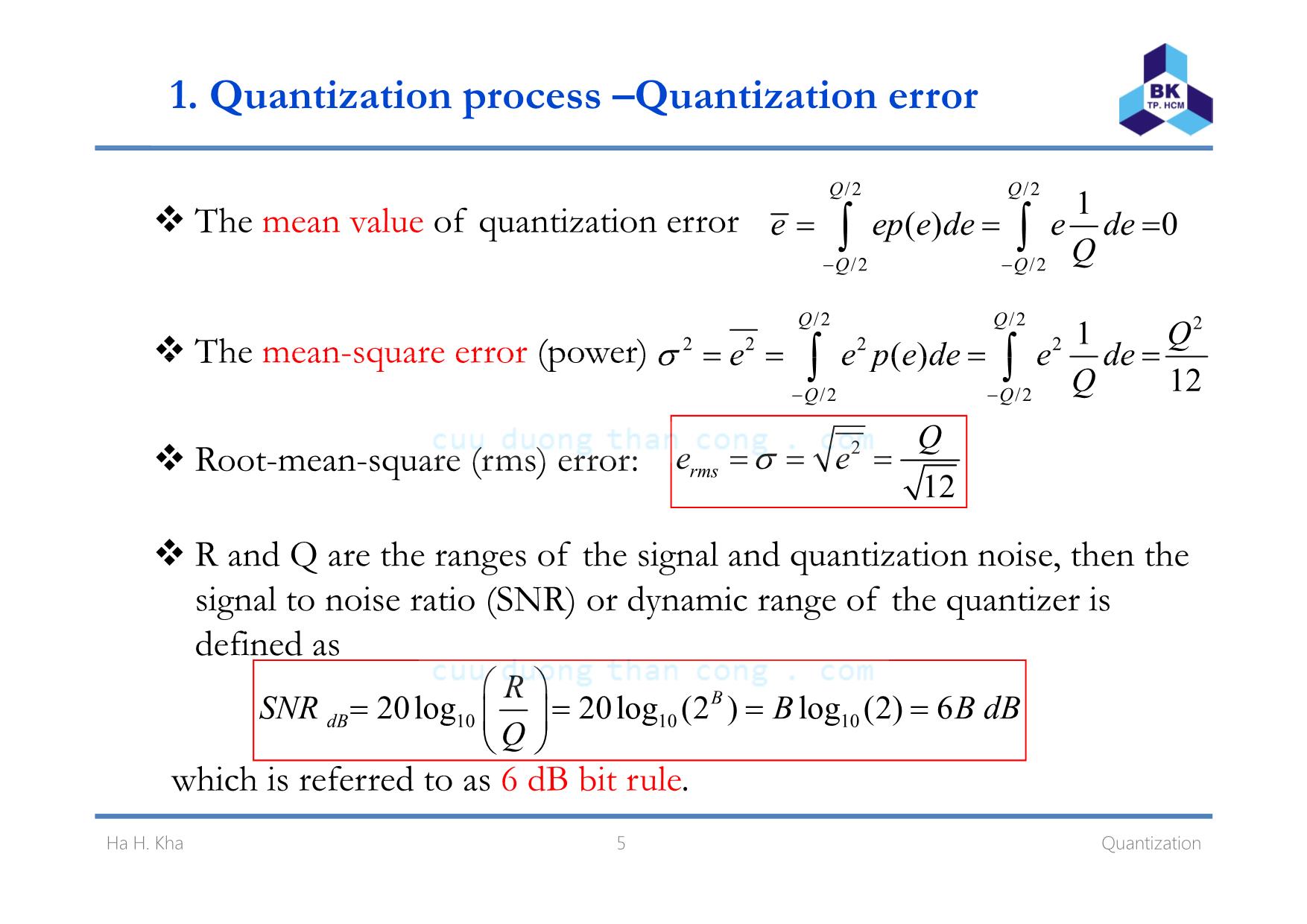
Trang 5
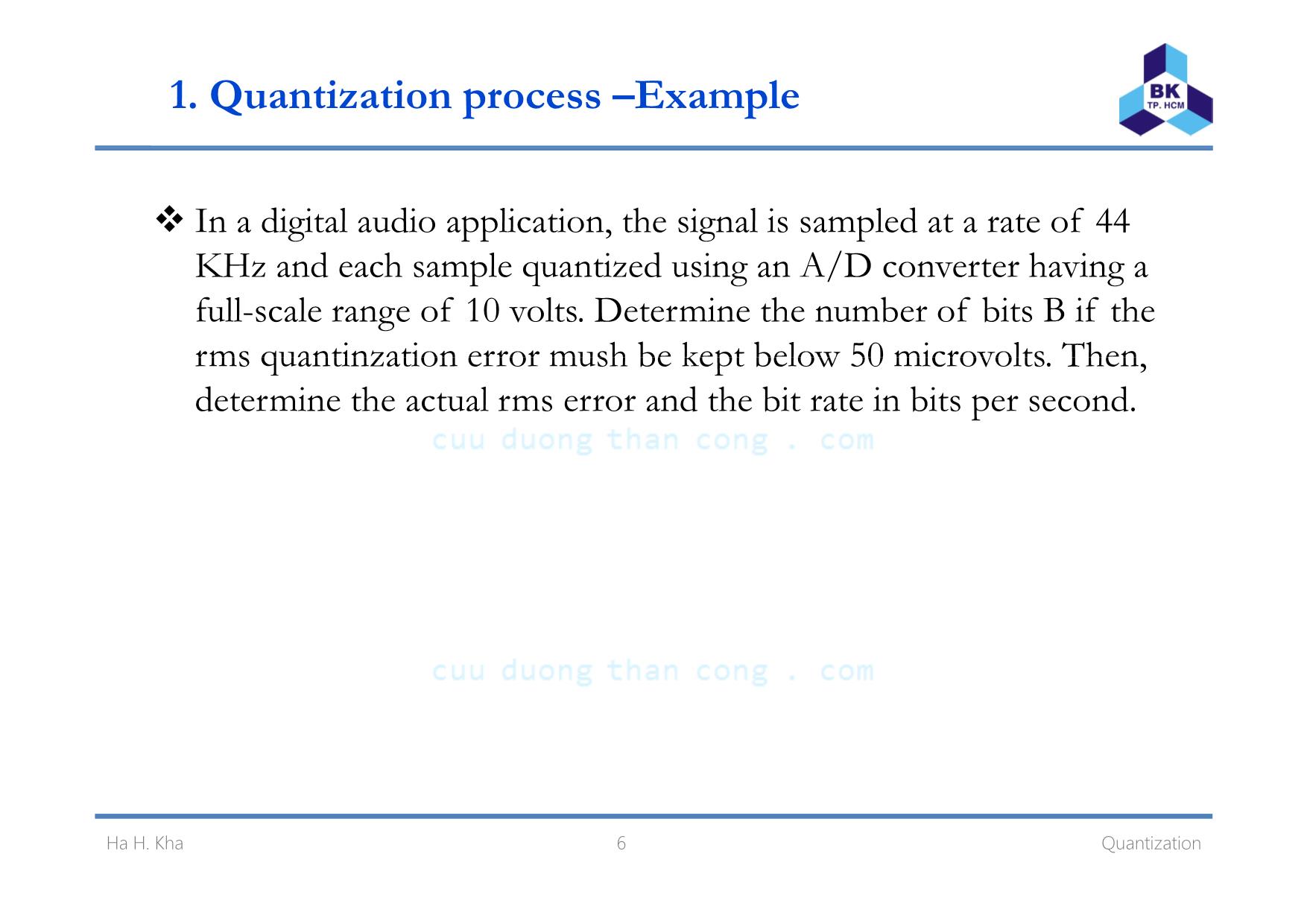
Trang 6
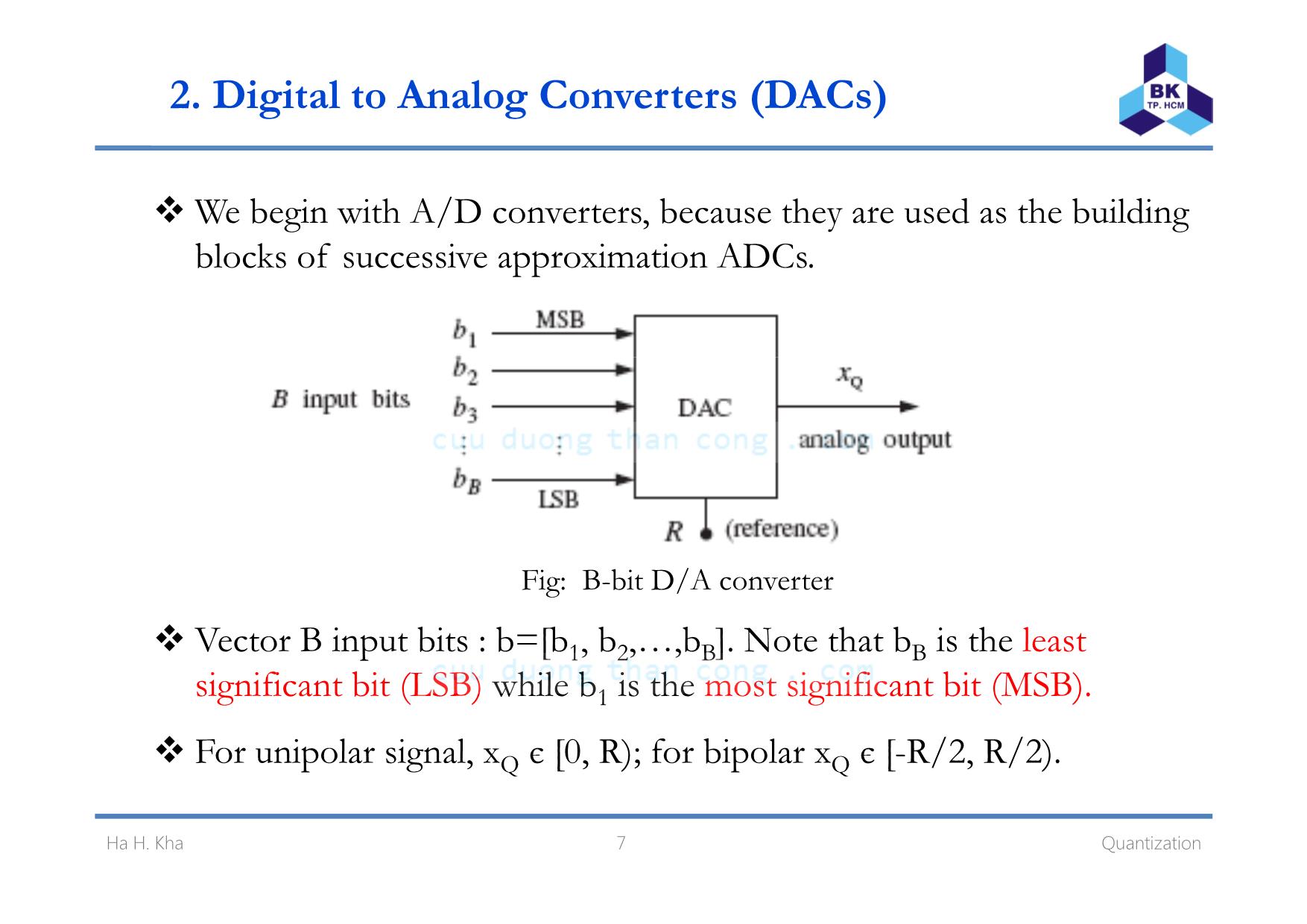
Trang 7

Trang 8
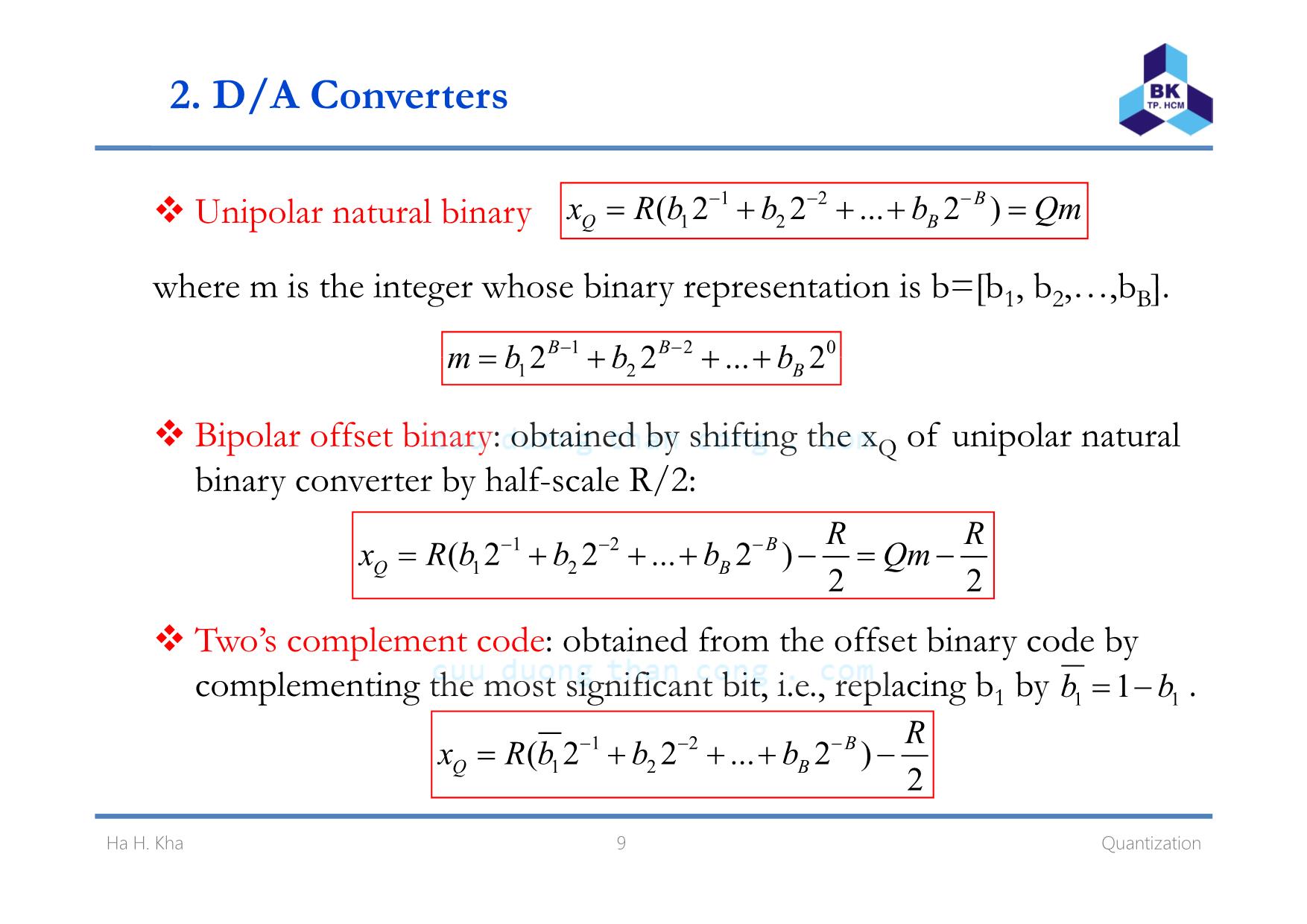
Trang 9
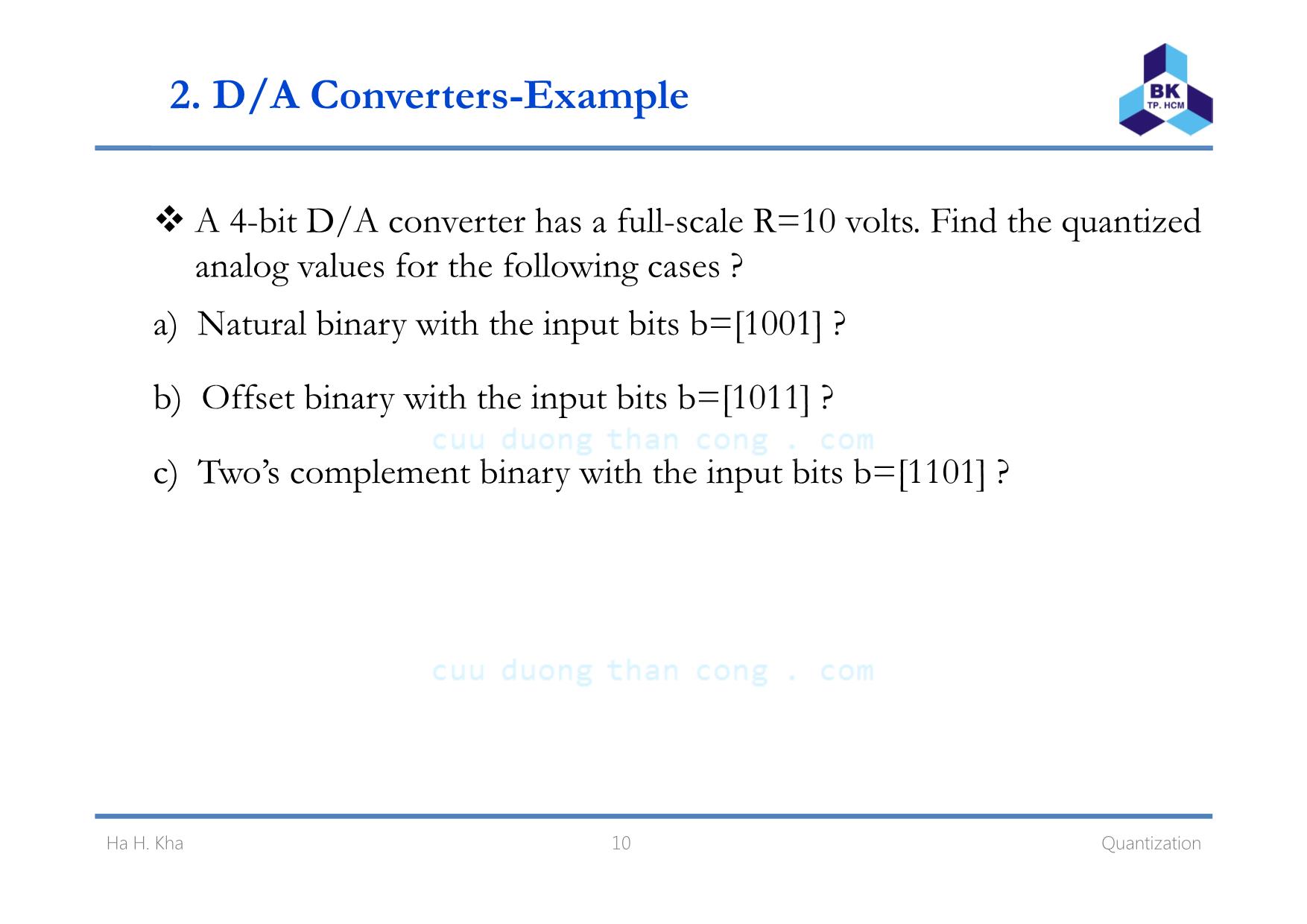
Trang 10
Tải về để xem bản đầy đủ
Tóm tắt nội dung tài liệu: Bài giảng Xử lý tín hiệu số - Chương 2: Quantization - Hà Hoàng Kha
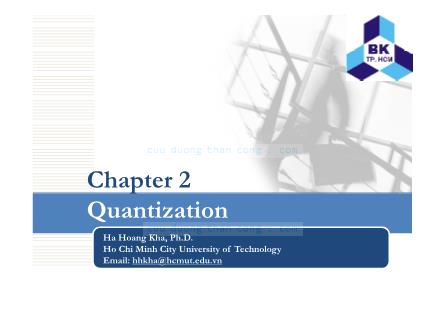
Chapter 2 Quantization Click to edit Master subtitle styleHa Hoang Kha, Ph.D. Ho Chi Minh City University of Technology Email: hhkha@hcmut.edu.vn 1. Quantization process Fig: Analog to digital conversion The quantized sample xQ(nT) is represented by B bit, which can take 2B possible values . An A/D is characterized by a full-scale range R which is divided B l l T l l finto 2 quantization eve s. ypica va ues o R in practice are between 1-10 volts. Ha H. Kha 2 Quantization 1. Quantization process Fig: Signal quantization Quantizer resolution or quantization width 2B RQ = A bip l ADC ( )R Rx nT≤ < o ar 2 2Q− A unipolar ADC 0 ( )Qx nT R≤ < 3 QuantizationHa H. Kha 1. Quantization process –Quantization error Quantization by rounding: replace each value x(nT) by the nearest q antization le elu v . Quantization by truncation: replace each value x(nT) by its below ( ) ( ) ( )Qe nT x nT x nT= − quantization level. Quantization error: Consider rounding quantization: 2 2 Q Qe− ≤ ≤ i if b bili d i f i i 4 Quantization F g: Un orm pro a ty ens ty o quant zat on error Ha H. Kha 1. Quantization process –Quantization error The mean value of quantization error /2 /2 1( ) 0 Q Q e ep e de e de Q = = =∫ ∫ The mean-square error (power) /2 /2Q Q− − /2 /2 2 2 2 2 2 1( ) Q Q Qe e p e de e deσ = = = =∫ ∫ /2 /2 12Q Q Q− − Root mean square (rms) error: 2 Qe eσ= = =- - 12rms R and Q are the ranges of the signal and quantization noise, then the signal to noise ratio (SNR) or dynamic range of the quantizer is defined as ⎛ ⎞ 10 10 1020 log 20log (2 ) log (2) 6 B dB RSNR B B dB Q = = = =⎜ ⎟⎝ ⎠ which is referred to as 6 dB bit rule 5 Quantization . Ha H. Kha 1. Quantization process –Example In a digital audio application, the signal is sampled at a rate of 44 d h l d A/ hKHz an eac samp e quantize using an D converter aving a full-scale range of 10 volts. Determine the number of bits B if the rms quantinzation error mush be kept below 50 microvolts Then . , determine the actual rms error and the bit rate in bits per second. 6 QuantizationHa H. Kha 2. Digital to Analog Converters (DACs) We begin with A/D converters, because they are used as the building blocks of s ccessi e appro imation ADCs u v x . Fig: B-bit D/A converter Vector B input bits : b=[b1, b2,,bB]. Note that bB is the least f b h l b h f bsigni icant it (LSB) w i e 1 is t e most signi icant it (MSB). For unipolar signal, xQ є [0, R); for bipolar xQ є [-R/2, R/2). 7 QuantizationHa H. Kha 2. DAC-Example DAC Circuit Rf ∑ iI Full scale R=VREF, B=4 bit 16Rf8Rf4Rf2Rf xQ=Vout MSB LSB b1 bB Fig: DAC using binary weighted resistor -VREF 31 2 4 2 4 8 16REF f f f f bb b bI V R R R R ⎛ ⎞= + + +⎜ ⎟⎜ ⎟⎝ ⎠∑ bb b b⎛ ⎞31 2 4 2 4 8 16Q OUT f REF x V I R V= = ⋅ = + + +⎜ ⎟⎝ ⎠∑( ) ( )4 3 2 1 0 3 2 1 01 2 3 4 1 2 3 42 2 2 2 2 2 2 2 2Qx R b b b b Q b b b b− − − − − − −= + + + = + + + 8 QuantizationHa H. Kha 2. D/A Converters Unipolar natural binary 1 21 2( 2 2 ... 2 )BQ Bx R b b b Qm− − −= + + + = where m is the integer whose binary representation is b=[b1, b2,,bB]. 1 2 02 2 2B Bm b b b− −= + + +1 2 ... B Bipolar offset binary: obtained by shifting the xQ of unipolar natural binary converter by half-scale R/2: 1 2 1 2( 2 2 ... 2 ) B Q B R Rx R b b b Qm− − −= + + + − = − 2 2 Two’s complement code: obtained from the offset binary code by l h f b l b bcomp ementing t e most signi icant it, i.e., rep acing 1 y . 1 2 1 2( 2 2 ... 2 ) 2 B Q B Rx R b b b− − −= + + + − 1 11b b= − 9 QuantizationHa H. Kha 2. D/A Converters-Example A 4-bit D/A converter has a full-scale R=10 volts. Find the quantized l l f h f llana og va ues or t e o owing cases ? a) Natural binary with the input bits b=[1001] ? b) Offset binary with the input bits b=[1011] ? ) T ’ l bi i h h i bi b [1101] ?c wo s comp ement nary w t t e nput ts = 10 QuantizationHa H. Kha 3. A/D converter A/D converters quantize an analog value x so that is is represented b B bits b=[b b b ]y 1, 2,, B . Fig: B-bit A/D converter 11 QuantizationHa H. Kha 3. A/D converter One of the most popular converters is the successive approximation A/D con erter v Fig: Successive approximation A/D converter After B tests, the successive approximation register (SAR) will hold the correct bit vector b. 12 QuantizationHa H. Kha 3. A/D converter Successive approximation algorithm where the unit-step function is defined by 1 0( ) 0 0 if x u x if x ≥⎧= ⎨ <⎩ This algorithm is applied for the natural and offset binary with truncation quantization. 13 QuantizationHa H. Kha 3. A/D converter-Example Consider a 4-bit ADC with the full-scale R=10 volts. Using the s ccessi e appro imation algorithm to find offset binar ofu v x y truncation quantization for the analog values x=3.5 volts and x=-1.5 volts. 14 QuantizationHa H. Kha 3. A/D converter For rounding quantization, we shift b Q/2 For the two’s complement code the sign bit b is treated x y : , 1 separately. 15 QuantizationHa H. Kha 3. A/D converter-Example Consider a 4-bit ADC with the full-scale R=10 volts. Using the s ccessi e appro imation algorithm to find offset and t o’su v x w complement of rounding quantization for the analog values x=3.5 volts . 16 QuantizationHa H. Kha Homework Problems 2.1, 2.2, 2.3, 2.5, 2.6 17 QuantizationHa H. Kha
File đính kèm:
 bai_giang_xu_ly_tin_hieu_so_chuong_2_quantization_ha_hoang_k.pdf
bai_giang_xu_ly_tin_hieu_so_chuong_2_quantization_ha_hoang_k.pdf

